How to Utilize Photogrpahy in Team Building

Many companies organize team buildings to create opportunities for their teams of employees to bond in an informal environment away from their usual workspace. To enhance the informal character mostly some kind of activity is chosen that allows interaction like carting, rafting, other sport activities or special experiences like a balloon ride. People usually love it. It gives the opportunity to interact in a different way with your colleagues and to get to understand each other better.
How would it be to add photography to team buildings and what would be the benefits? Nowadays with the smart phones and tablets, photos are taken all the time and also during team buildings, but mostly like on a holiday as memories. But photography can offer more and add extra benefits to the team building.
Photography can become the bonding tool of the team building and the anchor of the achieved result at the end. By making photography part of the activity through assignments involving the sport, the experience or even wildlife it adds extra stimulation, motivation, fun and understanding of each other. And at the end it can be utilized to anchor the groups experience through images that reflect the purpose of the team building.
Photography can be a vital source of fun, insight, stimulation and motivation for something important as a team building. With the side effect that its results last forever. … and its easy too!
Tell your boss!
Ute Sonnenberg for www.rohoyachui.com
Photokina rumors: The Canon 46MP monster

It seems like the megapixel monster was unleashed and Nikon and Canon are chasing Hasselblad. For a long time Hasselblad was the one with the monstrous amount of megapixel cameras, but recently Nikon caught up with them with their D800 and will Canon eventually race past both?
There are rumors that Canon will launch a DSLR with 46 megapixel at the Photokina in Cologne in September. But will it or will it rather stick to 22 megapixel? One needs the right lenses in order to get the best out of such a megapixel monster. Users of Nikon’s D800 are already carful with yielding this amazing camera.
We will know soon. Do we need such a thing?
Ute Sonnenberg for www.rohoyachui.com
The Only Limitation for Your Photography is You
29/08/12 17:19 Filed in: Photo Tips | Photography & Art

What do you think about your own photography? When you show your images to others, do you immediately start commenting them why you did this and this and excusing something you think could have done better?
Our photography shows always something of us and it is for ourselves like looking into a mirror when looking at our images. And if we do not like certain sides of ourselves, we might start limiting ourselves in our freedom of photographing what ever comes up or we wish to retouch our photographs in order to cover the flaws we think we have. But like with thinking our nose is skew and everybody will notice, we might be the only one seeing a flaw in the photograph. And what is actually a flaw? Nobody notices a skew nose in a fascinating personality and a blur photo can be the most fascinating image, magnetizing a room.
When you love a photo, it is a great photo and your heart is always right. Listen to it and you will enjoy the freedom photography has to offer.
Ute Sonnenberg for www.rohoyachui.com
How to Visualize Your Gut Feeling
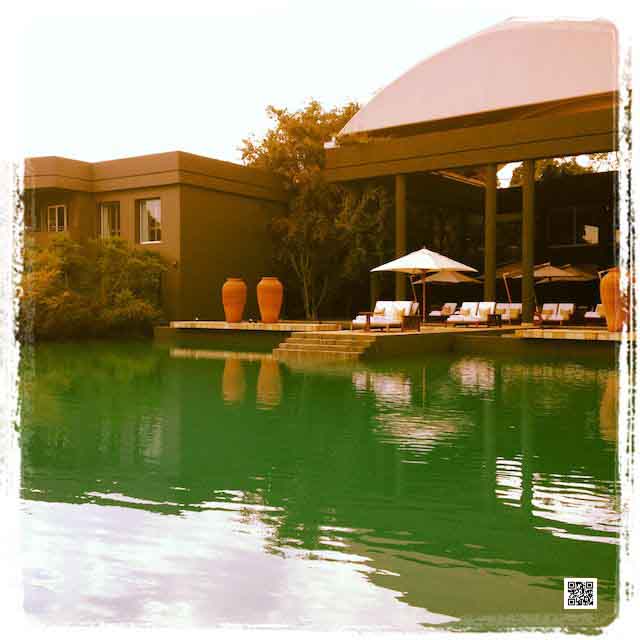
Have you ever had the feeling that something would happen, like your best friend would get the job he was so worried about and then he did or you did get the questions in the exam you were so afraid of getting, but refused to listen and learn for it? A typical reaction is that we say: I knew this would happen. So when you knew it would happen, why didn’t you do anything with that knowledge?
Our gut feeling is not something we can touch, smell or taste and it is not visible either. That makes it difficult for us to rely on it and trust it. Photography can help us a great deal in making it touchable and visible. We can photograph our gut feeling, not by photographing ourselves, but by just shooting away when we have the feeling that our gut feeling wants to tell us something and we don’t get it. It will make us photographing exactly the subjects that represent what it is trying to tell us. We just need to learn to trust, see and read the information in the image.
The image is the visualization of our gut feeling and when we print it, it becomes touchable as well.
When you try it, do not think about the photo or subject, thoughts will distort the visualization. Shoot with your gut or better call it heart. Be cautious with quick interpretations of what is in the image, distracting thoughts might do that. You will rather feel what you see. If you wish to learn how to use this tool for daily decisions, a training called Intuition Training is available.
The difficult part is not the photograph or the gut feeling or the heart. Thoughts can be a distorting factor and it is the art of clearing the channel from these kind of thoughts one got to learn.
Ute Sonnenberg for www.rohoyachui.com
Henri Cartier Bresson: A Photo Offers Itself.
27/08/12 12:17 Filed in: Photography & Art

A photograph is neither taken nor seized by force. It offers itself up. It is the photo that takes you. One must not take photos. (Henri Cartier-Bresson)
You might have experienced walking with your camera in a forest, on a beach or in a city and suddenly you see it, take up your camera and shoot. It’s like a composition hits you. Or you suddenly have the feeling you need to turn around and there it is, the photo, the wonderful sunset that made you turn around, although you didn’t see it, it made you turn around, the photo tapped on your shoulder, it offered itself to you and you love it. Its that kind of photo we call a “perfect photo”.
Essentially it is the light that creates the photo and your role is to listen, see and press the shutter.
Sit still and sense what photo is tapping on your shoulder right now. Look at it.
Ute Sonnenberg for www.rohoyachui.com
A Leopard's Struggle with His Kill
25/08/12 12:44 Filed in: Photo Safari | Photography & Art

It is already very fortunate to be close to a leopard and able to photograph this incredible animal, but this leopard sighting was of a magical kind.
We were on a game drive on Londolozi Private Game Reserve in the Sabi Sand (Kruger National Park) in South Africa when our tracker spotted a kill in a tree just of the road in the bush. We pulled over and found an the foot of the tree a male leopard, not to happy with us at first, but quickly focusing again on his prey up in the tree. His kill was a nyala and the tree was not really ideal for a hoisted kill, but it would do one could think. The leopard was not happy with the position of the kill and went up the tree to rearrange his kill. What happened then you better see in the video. Words cannot match that.
Enjoy!
Video: A Leopard in Perseverance
Ute Sonnenberg for www.rohoaychui.com
Free Download: Photo Safari Essentials eGuide
24/08/12 11:57
What is the Biggest Danger When Being in the Bush?
23/08/12 16:28 Filed in: Travel & Inspiration | Photo Safari

Forgetting where you are.
You might have read stories in newspapers or on the Internet about people getting eaten by a lion during their safari. Every now and then these things happen and immediately a fearful idea of the bush evolves. But its not the bush, that causes these terrible incidents, it’s the people.
When people go on safari they either drive by themselves for example in the Kruger National Park or they visit Private Game Reserves. In both cases they are informed about the rules for their stay in the bush which include staying in the vehicle when being on game drives and especially when being at a sighting, staying in the camp, not wandering out of the camp into the bush and not walking unescorted at night. People hear all these instructions and sign for it and yet they forget. It proves to be hard to remember where they are when they stroll through the bush camp, forgetting that its not the park at home or seeing a lion and forgetting its not the zoo and not TV. It might sound very silly when reading this, but it happens and the reason is the emotional experience of being in the bush that makes people forgetting where they are and how to behave. The bush is real and the lion is a real wild animal and not a part of an attraction park. This gets confused and then it goes wrong.
There were cases that a tourist went jogging in Kruger National Park and got eaten by lion. Pray runs and a running person triggers the predators hunting instinct. A woman was sitting at dinner in a lodge and remembered that she forgot her sweater at the pool earlier that day. She got up and walked over to the pool, that was about a hundred meters away in a separate part of the camp in the bush. Lion were there when she got there and she was killed. She had forgotten where she was and that she could not walk by herself at night, only with a guard. Only recently a tourist stepped out of the vehicle and walked towards the lion at a sighting in the Kruger National Park to get a better photo. He was killed. He also didn’t realized that this is real and no TV or zoo. One needs to know the bush to walk around there and the bush is not Central Park.
Remember, its real and where you are.
Ute Sonnenberg for www.rohoyachui.com
Would you like to do a Webinar?
22/08/12 17:15 Filed in: Photo Tips | Photography & Art

Photography is an inspiring medium and we all seem to love it and do it almost every day. There seems always to be some kind of discussion going on around photography, questions asked and opinions shared. How would it be to do that during a webinar?
If there is interest in doing a photography webinar, just leave a message to this blog post.
And if yes, what would you like the webinar to be about? What kind of photography subject would you like to hear and talk about?
You are welcome to share your thoughts and to inspire. Thank you!
Ute Sonnenberg for www.rohoyachui.com
How to Do Marketing for Photographers
21/08/12 19:32 Filed in: Photography & Art
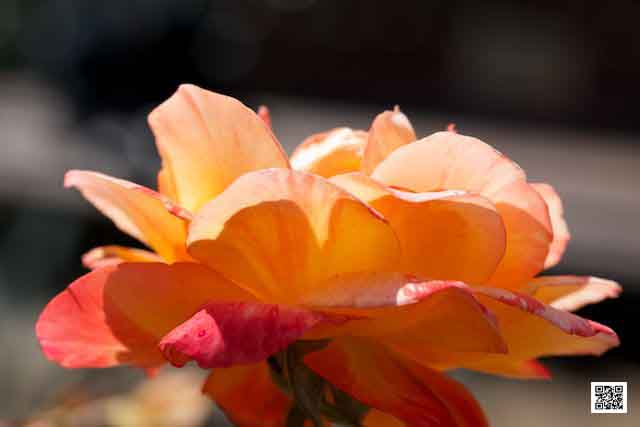
Marketing is often something photographers are struggling with, because they usually focus more on the artistic and photographic skills to develop and grow in. But we all got to live and pay for our groceries, so some money needs to come in as well.
There are great marketing blogs to help understanding how marketing works, like the Hubspot blog, but this is a general blog for marketers and not specific for photographers. A very good source of knowledge and advice for photographers are the Photoshelter Free Guides on a wide range of marketing and business subjects especially for the photographer’s needs. They translated the general marketing tools into photography specific tools, suiting the small size photography business as well.
Check it out; they are great.
Ute Sonnenberg for www.rohoyachui.com
Facebook's Emotional Limitations and its Effect on the Downfall of the Shares
20/08/12 16:33 Filed in: Insights & Opinion

Facebook only made recently the step from private company to public company and in the company’s vision, the founder’s influence is still recognizable. This personal note to the concept of facebook is part of the success, yet like with anything else it got also its downside. The bright side of facebook is the creation of space to connect and share, its downside is the desire to control and that clashes with the demands of shareholders of a public company.
Facebook adverts are a great marketing tool, allowing precise planning, targeting and budgeting of adverts, but Facebook itself decides where and when your adverts appear, who sees them and at what time of the day. So if you decide on a certain rate you wish to pay for a click, it is possible that this rate is only good enough to show your advert between 2 and 3 at night and you start wondering about the slow going clicks and the kind of people responding to your advert. It is like a magical hand is moving your advert around in its own interest, not in yours.
If you decide to have a business page on facebook to engage with your clients, you might do adverts to let people know that you are there and they can become fans to be informed what you are up to. Now you think, that what you post gets to the people who became a fan of your page, but this is not the case. Only a small percentage of your fans gets to see your posts and your posts have to create immediate likes in order to be allowed to be seen also by more fan’s. If you are lucky your posts make it to be posted to almost a quarter of your fan’s feeds, for the rest facebook recommends promoting your post with an advert. But it doesn’t tell how many fans will be allowed to see then the post or if another promotion tool will come up.
Whatever you do on facebook, whatever adverts you pay for, it never means it gets the exposure and engagement you thought you were paying for. It’s like holding a sausage in front of a dog, letting the dog jump, beg and get a little bite from the sausage and when the dog thinks he will be rewarded for all his efforts, the sausage is pulled away. When you try sending a message to your page’s fans, you will notice that you don’t have access to all your fans, only to less than 5% and sending a message with an URL can not exceed the number of 5 messages per day, without URL about 20 messages per day.
How does that stimulate businesses to be active in advertising and fan pages? Many are companies active, because little bites are allowed to be taken from the sausage, but for how long are they willing to be treated like that? And for how long are they willing to pay big amounts of money for small bites and for being controlled?
The downfall of the Facebook shares shows that the controlled freedom on facebook has come to a point that essential strategic changes need to be done. Otherwise it will not only be the downfall of shares, but of facebook.
Ute Sonnenberg for www.rohoyachui.com
Magical Photography Technology to Brighten up Our Days
15/08/12 16:10

Photography itself is already magic and our photographs seem to be an endless source of joy, yet the combination with other branches of technology makes it even more magical.
How about printing with sunlight? There is a process called Lumi Process that transfers images onto textiles and natural materials by using Inkodye and sunlight. The print is permanent and won’t even go off through machine washing.

Maybe you have already magnets on your fridge to hold photos of your family, friends and holidays, notes for groceries and other dear items. But how would it be to make your fridge the image? Kudu Magnets can do that. They are making image magnets customized to your fridge that make your fridge not looking like a fridge anymore, but like a piece of art. You can submit your own images and create your own photographic art fridge.

The Lumi Process is already magical, the art fridge makes an everyday tool magical, but the rock science magic is a photo app for your iPhone that accurately measures your pulse through the camera of your phone. The app is called Cardiio and available at the Apple app store for $ 3.99. It is based on technology developed at the MIT in Boston and measures the reflection of light on your skin. With higher heart beat more blood is pumped through the body and therefore the skin is absorbing more light. Lower heart beat means less blood pumped and the skin is reflecting more light. All this is measured through the camera of the phone and saved as a health track record. It works very well in daylight. In low light and backlight situation the measurement is not working, but the app will tell what needs to be done to get an accurate result.

Try it, its real magic!
Ute Sonnenberg for www.rohoaychui.com
Olympics Emotional Analogy in Photography: Victory
12/08/12 11:43 Filed in: Photography & Art

Victory has many faces. For some athletes it might be already a victory to be part of the Olympic Summer Games in London, for others a place in the finals is a victory and for others the winning of the gold medal is the victory they came for. All of them experience that feeling only a victory or success can give, like being on the top of the world.
Fortunately in photography victories can be experienced more easily and more frequently. Every image we love is a victory. It gives us joy whenever we look at it, it can hang on the wall like a gold medal and tells others about our love for photography.
Enjoy snapping your victories.
Ute Sonnenberg for www.rohoyachui.com
Olympics Emotional Analogy in Photography: Perseverance
11/08/12 11:39 Filed in: Photography & Art

All athletes at the Olympic Summer Games in London must be perseverant; otherwise they wouldn’t be there. They managed to set aside everything else, trained hard and conquered challenges in order to participate in this amazing event. And if they didn’t make it this time they have to wait for another four years for the next Olympics.
How perseverant needs a photographer to be? Although photography is easy accessible for anybody and a photo is taken with a quick click on the shutter, becoming a professional photographer, a photo artist or growing as a hobby photographer demands a high amount of perseverance. It can be a process of insecurities, doubts and setbacks before improvement and success arrive. The photographers at the Olympics might be just as perseverant as the athletes they are photographing.
Ute Sonnenberg for www.rohoyachui.com
Olympics Emotional Analogy in Photography: Resilience
10/08/12 11:41 Filed in: Photography & Art

Isn’t it very interesting watching the more technical disciplines at the London Olympics like long jump, high jump and discus? The participants have a number of attempts for their jump or throw and they seem to need them. How must that feel having 4 invalid jumps and only 2 more attempts left? The most resilient athletes are able to cope with such a situation. They accomplish to focus again and throw out an amazing jump.
Photography is often like a 100-m final with no more attempts left, but there are plenty of situations where resilience is an important ability to have. Think of the simple task of photographing your dog. How much resilience does that demand? He is looking away, running off, putting his nose on the lens, biting the lens, biting in your trousers, putting his ears flat or closing his eyes and to make it worse he is enjoying the whole excitement and attention too. Well, this is a moment to practice resilience. Sit down, put the camera aside and let the whole situation calm down, for yourself and your dog. Let him go and he will start doing his normal thing, that what you actually wanted to photograph and then calmly grab you camera, stay in the background and shoot away.
Ute Sonnenberg for www.rohoyachui.com
Olympics Emotional Analogy in Photography: Pain
09/08/12 18:21 Filed in: Photography & Art

It is very sad to see when a player from the Dutch women hockey team gets injured during the first training at the Olympics. Knee injury, over. All the training, commitment and sacrifices for nothing. At that moment there is not only physical pain, there is also a lot of emotional pain. The world seems to end at that very moment.
Is there a way to compare this situation with any situation in photography? There are no Olympic medals in photography, but there is also a lot of commitment, sacrifices and work done to create great images. And there are also moments of great pain, when all the efforts seem to fall into nothing. Finally being on the Galapagos Islands, these incredible animals eventually right in front of you and the camera is not working, broken. At that moment not only the camera is broken, but also the photographer. What to do now?
Allow the pain to be there, give it space and a moment to be. If you don’t, it will push through when you don’t want it to. By giving it a moment it will disappear quickly and you will have all your energy to borrow a camera from another photographer, put in your memory card, take some shots and explore the opportunities to repair or replace your own camera.
Ute Sonnenberg for www.rohoyachui.com
Olympics Emotional Analogy in Photography: Disappointment
08/08/12 11:13 Filed in: Photography & Art
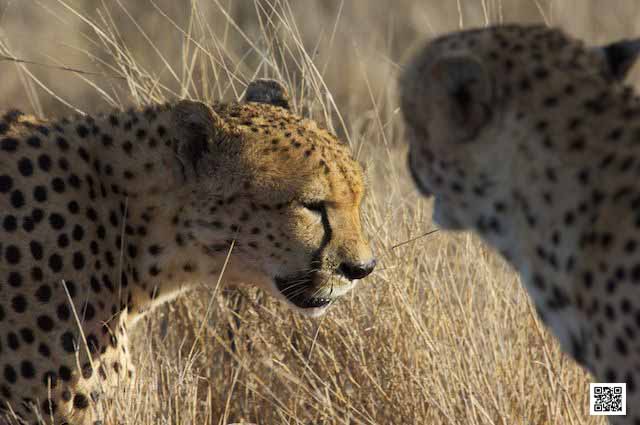
The short cut to disappointment goes through unrealistic expectations. When you are a man and you need 10.5 seconds to run the 100-meter and you expect yourself to be the gold medal winner at the Olympic Summer Games in 2012, you will be disappointed at the finish. Even if Usain Bolt falls ill that day, there are still others to beat you by lengths.
When you experience the feeling of disappointment in photography, ask yourself what you expected to happen and if this was realistic. Did you buy a new camera, expecting everything would go by itself now? Or did you photograph a house in the style you saw in a magazine, expecting that your image would be on the next cover? Reflect on your thoughts that lead to the expectations, what were they based on and what was the outcome. By doing that your disappointment will be converted into realistic plans to accomplish your photography dreams.
Ute Sonnenberg for www.rohoyachui.com
Olympics Emotional Analogy in Photography: Trances
07/08/12 08:14 Filed in: Photography & Art
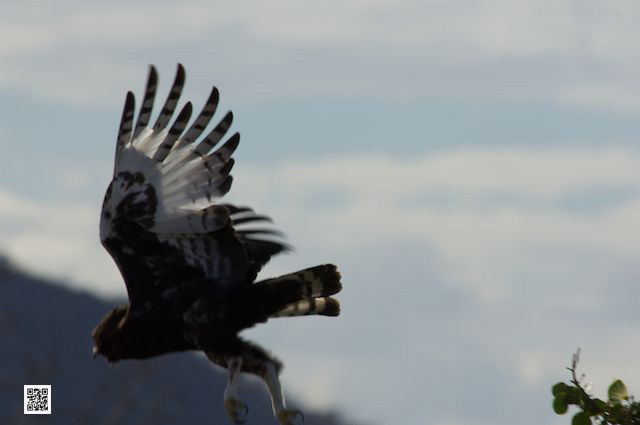
Some of the Olympic athletes look like they are in a trance when getting ready for the start. Swimmers wear already their goggles and headsets with music to induce an even deeper focus trance, blocking out all possible disturbing factors.
How about photographers? Isn’t a photographer in a trance like state when being connected with what he/she is photographing? This state of forgetting the world around you and focusing on the subject and light, walking around it to shoot it from different angles, discovering new perspectives and moving with the light. Photographers can enter this trance like state easily and that makes them vulnerable for dangers like cars approaching, balls flying around and more serious things, just because they wouldn’t notice. Be conscious about that and cover your back before you surrender to the pleasant trance of photographing great subjects.
Ute Sonnenberg for www.rohoyachui.com
Olympics Emotional Analogy in Photography: Expectations
06/08/12 17:03 Filed in: Photography & Art

Over 14,000 athletes are competing at the Olympic Summer Games in London to win one of the 906 medals. How many of them might have arrived with expectations to win a medal or even a gold medal and how many of these expectations were proved not to be realistic? Not all 14,000 participants can win a gold medal and expecting one can spoil the fun and great experience.
How many people are doing photography and how many of them can have their image on the cover of a magazine? Don’t spoil the fun and great joy of doing photography through the pressure of unrealistic expectations. Enjoy your photography and show how you see the world through your amazing work.
Ute Sonnenberg for www.rohoyachui.com
What the Olympic Sports teach Photographers: Diving
05/08/12 13:33 Filed in: Photography & Art

You probably associate immediately diving with depth, depth of field, depth in the picture. Yes, photography has a lot to do with depth. In psychoanalysis diving into the ocean is associated with descending into the subconscious. As a photographer we are surfacing the colorful under water world all the time by visualizing emotions, feelings, moments and ideas. A photo is always a dive into the soul of whatever moment is captured.
Ute Sonnenberg for www.rohoyachui.com
What the Olympic Sports teach Photographers: Beach Volleyball
04/08/12 16:17 Filed in: Photography & Art

Don’t forget to play. Photography’s strength is playing. Play supports creativity and lets art evolve. Play inspires and opens space for innovation.
Rest and relax. Recharge creative energy for exciting photographic events to come, although you might not know about them yet. Wouldn’t it just be to bad being too tiered to photograph the Olympics when suddenly asked to do so?
Ute Sonnenberg for www.rohoyachui.com
What the Olympic Sports teach Photographers: Athletics
03/08/12 19:13 Filed in: Photography & Art

Some assignments might be like a 100-meter race, others like high jumping and others like a marathon. Find out what kind of athlete you are. Don’t try to run the marathon when you are a sprinter and don’t do high jumping when you are afraid of height. Find your strength and go for it. You wouldn’t do underwater photography, if you couldn’t swim, would you? Unless you want to learn how to swim.
Ute Sonnenberg for www.rohoyachui.com
What the Olympic Sports teach Photographers: Cycling
02/08/12 16:51 Filed in: Photography & Art
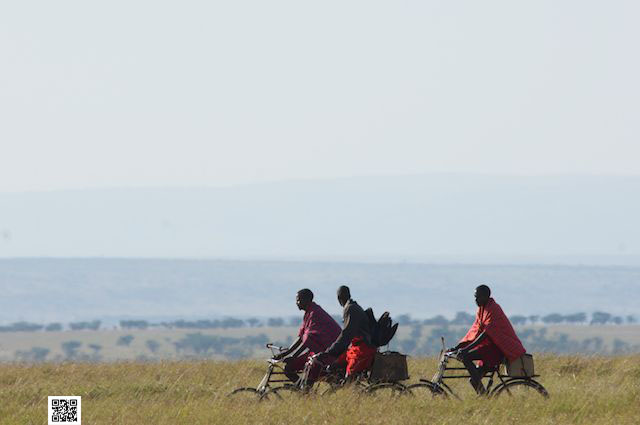
You might feel sometimes like being on an endless climb, followed by a scary decent into endless roads through boring landscapes. Endurance on physical, emotional and mental level is needed to make it to the finish. Keep your spirit high and listen to your body. Maintain your bicycle, your physical health and have a spare wheel. Find likeminded to make a great team.
Ute Sonnenberg for www.rohoyachui.com
What the Olympic Sports teach Photographers: Canoe Slalom
01/08/12 16:04 Filed in: Photography & Art

Photographer’s life can be a wild river, fast and with obstacles hidden in the waves. Hold the paddle steady in your hand. Steer your canoe through the stream of challenges with a sharp eye and don’t panic when you go head under. Use your strength to surface again and steer past all the obstacles into calmer waters.
Ute Sonnenberg for www.rohoyachui.com
